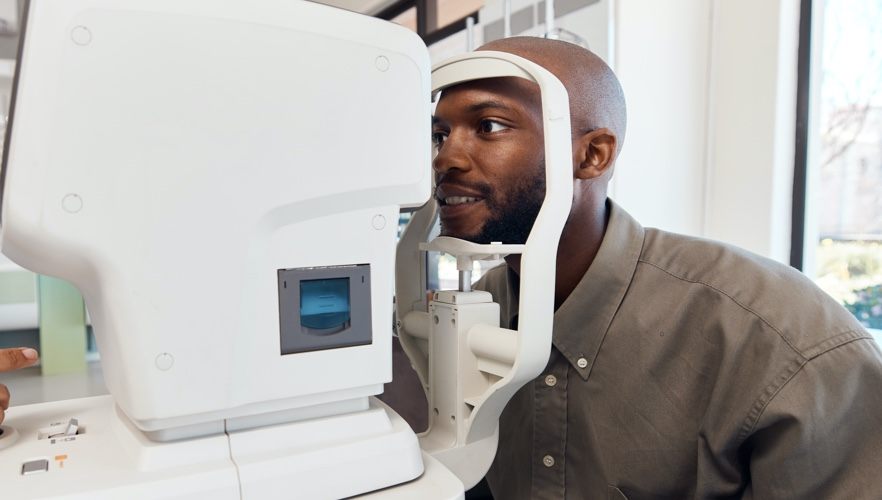Taking preventive steps early can save your vision and stop you from going blind due to Glaucoma. Learn why regular and thorough eye exams are so important, and what steps the eye care professionals at Wills Eye Physicians Bailey Weber Wisner might take to confirm a Glaucoma diagnosis.
What can a person do to either prevent Glaucoma or detect it as early as possible?
The most critical step to early Glaucoma prevention or detection is to have regular and thorough eye exams. Since Glaucoma has no symptoms, only eye care professionals can detect problems. Many patients have a diagnosis of “glaucoma suspect” or “person at risk for glaucoma.” The patient might present with certain risk factors like elevated eye pressure or how the nerve looks during an exam. However, the eye doctor may not be able to prove that damage has occurred. Although this can seem frustrating, in these cases, the eye care professional will want to track a patient over several visits to confirm a diagnosis. It’s essential to identify at-risk patients as soon as possible so ophthalmologists can deal with the disease the moment they find a problem.
How often do you recommend someone get an eye exam?
Anyone over the age of 60 should receive an eye exam at least once a year. Eye doctors also recommend that any patient over the age of 40 with a family history of Glaucoma, diabetes or African American heritage should also receive an exam once a year. If a patient does not have one of these risk factors, they should see an eye care professional once every two or three years.
What are common tests run to detect and confirm a Glaucoma diagnosis?
There are four common tests used to detect Glaucoma:
Optic nerve imaging: An image very accurately measures the thickness of the optic nerve fiber layer. An eye doctor will capture this image every year and compare this measurement year over year.
Visual field test: An eye doctor will also perform this test every year. The test measures subtle decreases in peripheral vision, and it will detect problems much sooner than a patient would.
Gonioscopy: During this test, an eye care professional will place a mirrored contact lens on the cornea’s surface. This allows the doctor to examine the angle between the cornea and the iris, which is where the drain of the eye is located. This can help diagnose specific types of Glaucoma and whether they are open or narrow angle.
Pachymetry: This test measures the thickness of the cornea. In people with very thick or very thin corneas, the pressure measurements can be higher or lower than the eye’s actual pressure. This test allows the eye care professional to adjust the measured pressure to be more accurate.
Are there any nutritional supplements or vitamins that can help with Glaucoma prevention or treatment?
There are no specific vitamins or nutritional supplements that help treat Glaucoma. Most eye care supplements and vitamins that exist on the market help with macular degeneration and not Glaucoma.
What are some easy steps people can take today to either prevent Glaucoma or slow its progression?
Patients can set themselves up for success by scheduling regular and thorough eye exams and knowing their family history. Critical information like a family history of Glaucoma or a history of sight loss due to Glaucoma can help an eye care professional shape a long-term treatment plan.
Patients can also benefit from visiting the same practitioner every year. If a patient shows up at a new eye care facility with a diagnosis of Glaucoma, the new doctor has to start from scratch. If a patient must switch practices, they can help their treatment by providing their new doctor with the most thorough medical records possible.
